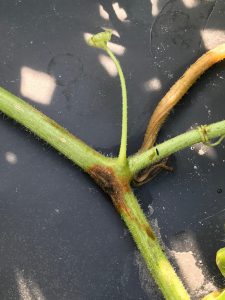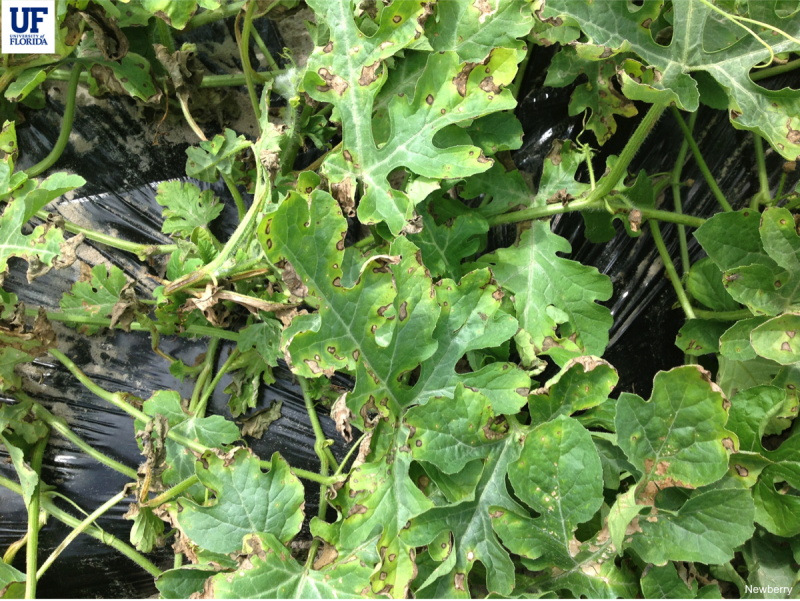Bob Hochmuth with input from Suwannee Valley Extension Agents: Mark Warren (Levy), Tyler Pittman (Gilchrist), Tatiana Sanchez (Alachua), Luke Harlow (Union), Jay Capasso (Columbia), Dan Fenneman (Madison), Keith Wynn (Hamilton), Danielle Sprague (Jefferson), Emily Beach (Lafayette), Amanda Phillips (Suwannee), Kevin Athearn (RSA-Agri- business), and Sudeep Sidhu (RSA- Water Resources).
Crop Recovery Continues
The update this week is pretty short, which is probably a good thing. The past 2-3 weeks have provided rainy periods each week, but also warm, sunny days with low humidity on many of those days; just what the plants needed. Many growers who have damage on very early plantings and medium length vines at the time of the freeze, are expressing concern about how “bad” the plants still look. In those fields, I have seen the new growth is pushing from the crown, and even though the older vines still look rough, I feel like things will be okay. In these instances, most of the yield will come from those new buds at the base of the plants. So, focus on how those new buds look and try to look past the rough looking old and damaged vines. However, keep an eye out for disease developing on that older damaged tissue. Our suggestion continues to be keep it simple and let the plants recover.
We have a positive diagnosis of bacteria, Pseudomonas (angular leaf spot) and also gummy stem blight, but both are isolated to a very few fields.
If bacterial diseases are not a concern in your fields, we recommend continuing applications of chlorothalonil (Bravo, etc.) to prevent disease development. If you observe any disease symptoms, please contact your local agent for prompt identification through our “Early Detection” program. (Bob Hochmuth).
- 2024 Watermelon Season Wrap Up - June 21, 2024
- Weekly Watermelon Update – June 3 - June 7, 2024
- Weekly Watermelon Update #10 – May 20 - May 24, 2024


